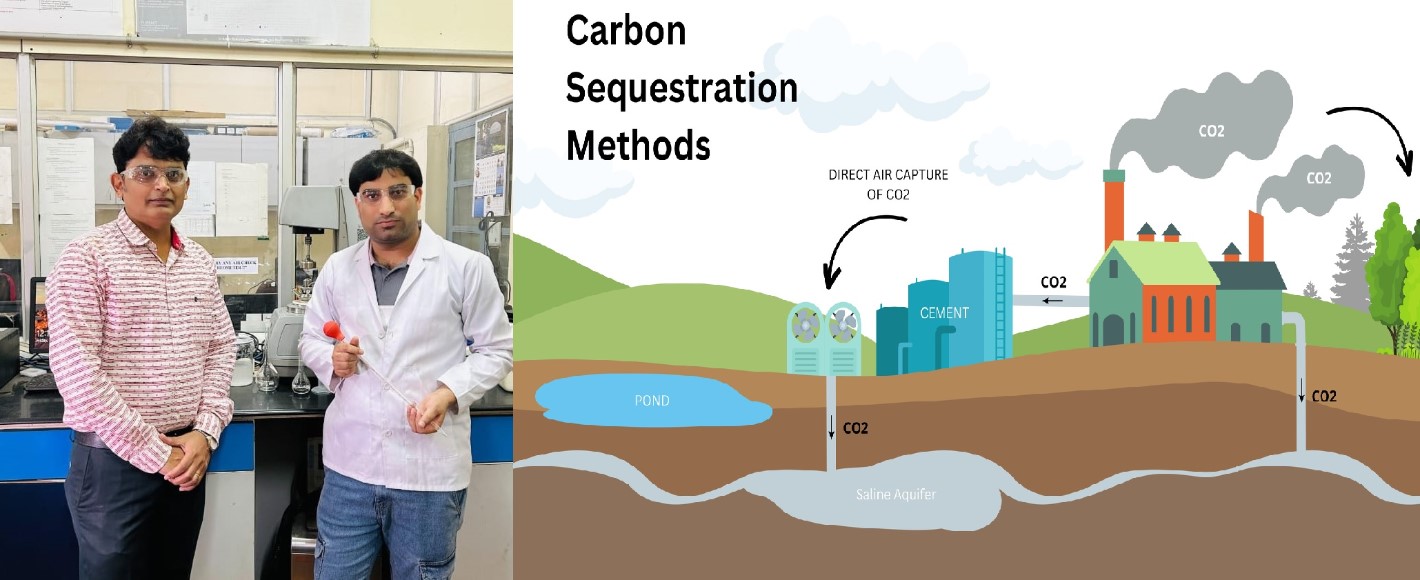IIT Madras Researchers Identify Indian Ocean and Bay of Bengal for Large-Scale CO2 Storage

IIT Madras researchers uncover vast CO2 storage potential in the Indian Ocean and Bay of Bengal, offering a promising solution for reducing greenhouse gas emissions and advancing India's climate goals.
Researchers at the Indian Institute of Technology Madras (IIT Madras) have discovered that the Indian Ocean and Bay of Bengal hold significant potential for storing large amounts of carbon dioxide (CO2). This process, known as CO2 sequestration, could play a crucial role in reducing greenhouse gas emissions and helping India meet its climate goals.
CO2 Sequestration Explained
CO2 sequestration involves capturing CO2 emissions from industrial sources and storing them in a way that prevents them from entering the atmosphere. The IIT Madras researchers propose using the deep ocean as a storage site. Specifically, they suggest that CO2 can be stored beyond 500 meters of sea depth, where it can form solid hydrates.
Benefits of Oceanic CO2 Storage
Storing CO2 in the ocean has several benefits:
- 1. Permanent Storage: Beyond 2,800 meters of sea depth, CO2 becomes denser than seawater, allowing it to remain stable as a liquid or solid hydrate, preventing reemission into the atmosphere.
- 2. Large Capacity: One cubic meter of gas hydrate can store approximately 150-170 cubic meters of CO2.
- 3. Eco-Friendly: The stored CO2 forms a substance called gas hydrates, which is stable and environmentally safe.
Research Findings
The key findings of the IIT Madras research include:
- Density of CO2: At depths greater than 2,800 meters, liquid CO2 is denser than seawater, enabling it to form stable pools or solid hydrates.
- Subsea Sediments: The clay sediments on the ocean floor enhance the mechanical and thermal stability of the gas hydrates, ensuring long-term storage potential.
Impact on Industrial Clusters
This research could have significant implications for decarbonizing industrial clusters in India. By capturing and storing CO2 emissions from industries, the process can help reduce the carbon footprint of these sectors and support India's net-zero targets.
Leading the Research
The research was led by Prof. Jitendra Sangwai from the Department of Chemical Engineering at IIT Madras, along with Yogendra Kumar Mishra, a Prime Minister's Research Fellow. Their work paves the way for developing large-scale CO2 sequestration methods using subsea sediments, offering a practical solution to global carbon emission challenges.
Future Prospects
With the potential to store CO2 safely and permanently, the oceans could become a key tool in the fight against climate change. The findings from IIT Madras provide a foundation for further research and development, aiming to implement these storage techniques on a larger scale.
Conclusion
The discovery by IIT Madras researchers highlights the untapped potential of the Indian Ocean and Bay of Bengal for CO2 sequestration. This innovative approach could play a crucial role in reducing industrial emissions and supporting India's climate goals, demonstrating a promising pathway to a more sustainable future.


